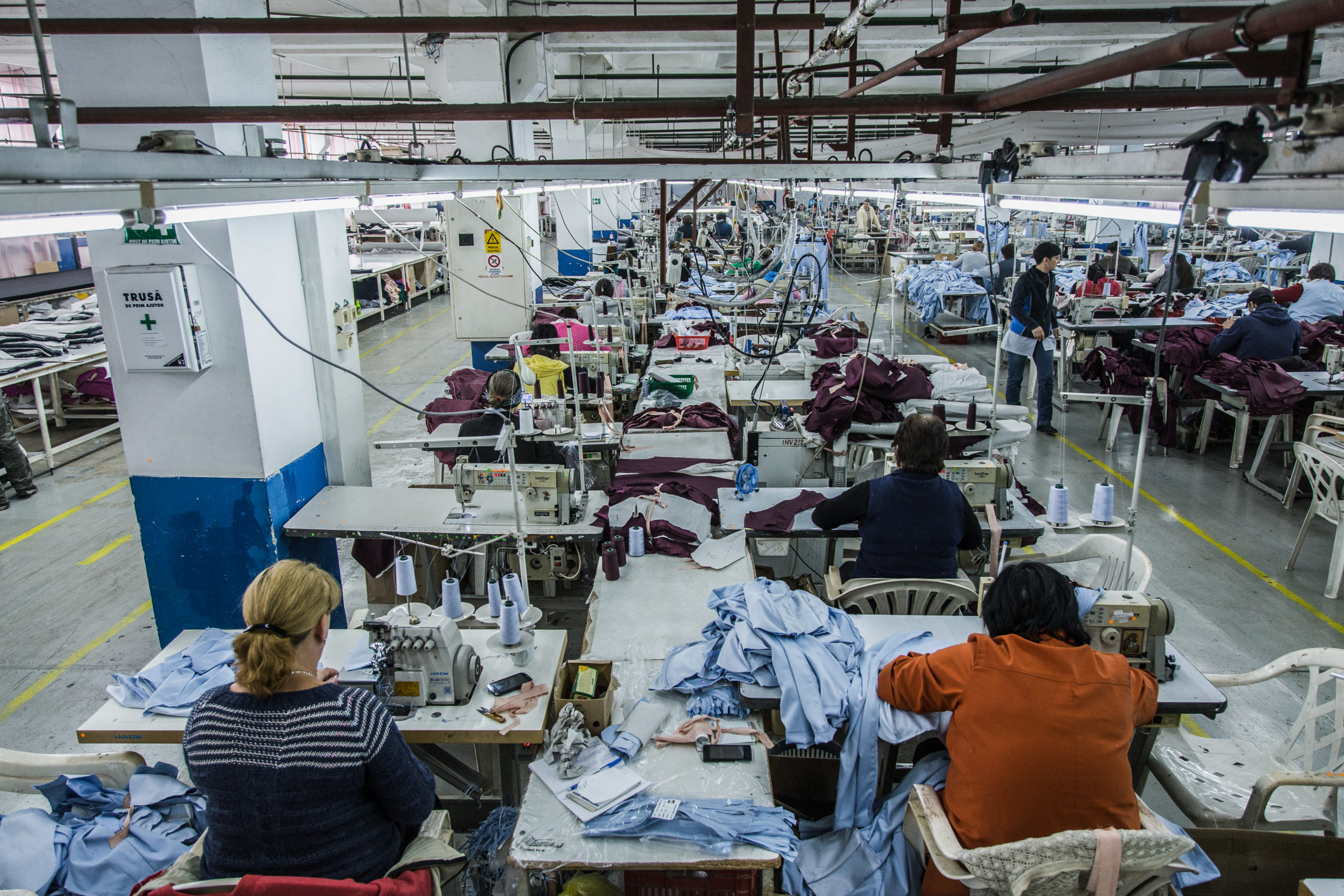The Clean Clothes Campaign (CCC) has welcomed a decision by three fashion companies to
ensure a group of workers in Romania were paid full back wages following a campaign that
went viral.
By Michelle Russell
The Clean Clothes Campaign (CCC) has welcomed a decision by three fashion companies to
ensure a group of workers in Romania were paid full back wages following a campaign that
went viral.
During the first months of the pandemic, garment workers at the Tanex facility in Romania,
received EUR140 (US$165) – just over half of their regular monthly wage, according to
CCC. A campaign that followed led to international pressure and resulted in Inditex, Holy
Fashion and a UK high street brand take “responsibility to settle the violations between the
management and the workers”.
“Like thousands of workers worldwide, the workers of the Tanex factory saw their wages cut
without justification during the pandemic,” says CCC. “Normally, Romanian garment
workers receive the legal minimum wage of EUR278 – this includes overtime. This legal
minimum wage amounts to 24% of a base living wage for Romania and 76% of the poverty
threshold for Romania (as of 2018). That means that during the Covid-19 pandemic these
workers only received about 10% to 15% of a living wage.”
According to the human rights group, other labour and human rights violations that occurred
at Tanex during the pandemic included intimidating and harassment of workers, non-payment
of mandatory social insurance contributions and not paying overtime.
“Only when the group of Romanian workers joined forces with the global CCC network and
wrote to Tanex’s main buyers, their plight was properly picked up. Under pressure from the
Clean Clothes Campaign and the workers, the brands reached out to the factory. Union access
was guaranteed, which had previously been denied. Finally, in September the workers who
were still employed at the factory in August received their full salaries, and after further
pressure, those who were fired or left the factory in the months before were also paid the
money they were owed.”
Romania is the biggest garment producing country in Europe. An estimated 400,000 workers
are employed in about 9,000 factories producing for brands such as H&M, Zara, Bershka, and
XXX.
A survey published earlier this year from PwC’s HR benchmarking project Saratoga, found
that Romania faces an “acute shortage of workforce,” needing about one million extra
workers to sustain a 3.5% economic growth by 2023.
CCC has been stressing that for the past ten years, Romania’s clothing and textile factories
have constantly been searching for workers, as low wages, poor working conditions and
better pay elsewhere have impeded recruitment.
Neither Tanex, Inditex, or Holy Fashion responded to just-style’s request for comment at the
time of going to press.
A survey from PwC’s HR benchmarking project Saratoga, released at the end of last year, concluded
that Romania faces an “acute shortage of workforce,” needing about one million extra workers to
sustain a 3.5% economic growth by 2023.
The clothing and textile industry is no exception – between 2014-2018, the number of people
working in garment manufacturing dropped by about 21.5%, according to European Union
(EU) statistical agency Eurostat, with 8,500 companies employing around 199,400 workers in
2018.
The Clean Clothes Campaign calculates that combined formal and informal workers in the
sector amount to around 400,000 people. It has been stressing that for the past ten years,
Romania’s clothing and textile factories have constantly been searching for workers, as low
wages, poor working conditions and better pay elsewhere have impeded recruitment.
Moreover, Romania’s unemployment rate is at 3.2%, a historic low, notes Madalina Pasca,
people and organisation manager at PwC Romania. “The blue-collar category is where this is
felt most. And as blue-collar workers dominate the textile industry, companies are feeling the
impact.” It is estimated that 46.8% of blue-collar workers may switch jobs in Romania during
any given year.
“The challenges for the textile industry are similar to all industries employing blue-collar
workers,” adds Corina Cimpoca, founder of Bucharest-based MKOR Marketing Consulting.
Manual workers are a major part of “Romania’s strong labour migration in recent years” and
the clothing and textile sector especially is “affected by lack of skills and the low popularity
of technical education.”
Such difficulties, coupled with comparatively high costs compared to other outsourcing
centres, have helped prompt some international manufacturing companies to close production
sites.
A good example is US-owned Hanes Global Supply Chain Romania, which last February
(2019) closed a plant in the Arad-Curtici Free Trade Zone, western Romania. Also, Rieker, a
Swiss shoemaker, closed a unit employing 663 people in the western city of Lugoj, the same
month.
Export dependence
If Romania had a sustainable clothing market where consumers bought local brands, more
added value could remain in the country, allowing wages to rise.
But Cimpoca notes most production goes to export and domestic consumption is
overwhelmingly supplied by imports, with only 3% to 4% of clothing purchases being of
recognisable national brands, such as Braiconf or Nissa.
This export dependence has been rising. While the country’s fashion production has fallen
from EUR3.9bn in 2014 to EUR3.5bn (US$3.74bn) in 2019, according to statistics from
MKOR Marketing Consulting, exports have increased, rising 3% between 2017-2018, data
from the country’s National Institute of Statistics (Institutul National de Statistica – INS)
shows.
Meanwhile, imports have grown, notes clothing and textile industry federation FEPAIUS
(Federatia Patronala a Textilelor, Confectiilor si Pielariei), being larger by value than exports
since 2016.
Against this backdrop, the fact that MKOR Consulting predicts a 2019 year-on-year fall in
exports by 1.5% is far from a sign of strength.
How to deal with these problems?
Pasca argues inflating wages is not the answer, especially if “it’s not necessarily correlated
with productivity.” Instead, Romanian employers can and should “focus on introducing
tailored reward and benefit packages and reach out to alternative population segments – such
as single mothers needing work flexibility or people in remote areas.”
She suggests investing in “employee experience,” offering flexible hours and career growth
opportunities that appeal especially to Millennials and Gen Z workers, are also sensible
options.
Hiring foreign labour could also work, but Pasca says companies need to be careful. In 2018,
the government scrapped a law ensuring foreign workers receive at least the average gross
salary paid to Romanians, allowing employers to pay them minimum wages. 30,000 work
permits were issued during 2019 for non-EU foreign workers – with Vietnam, Sri Lanka,
India and Nepal the top non-EU sources for foreign labour in Romania’s clothing and textile
the manufacturing sector, according to Romanian news sources.
Deciding to hire foreign labour should follow detailed cost-benefit analysis, advises Pasca.
“In some cases, this can be more costly across all steps, from staff recruitment to training.
Paying foreign workers more than Romanians would be regarded as discriminatory; and in
some cases, opportunities in other European countries are more attractive,” making recruiting
quality workers difficult.
Rather, says Cimpoca, the Romanian government should support private sector efforts to
persuade Romanians abroad to return home and “motivate those who are still here.”





